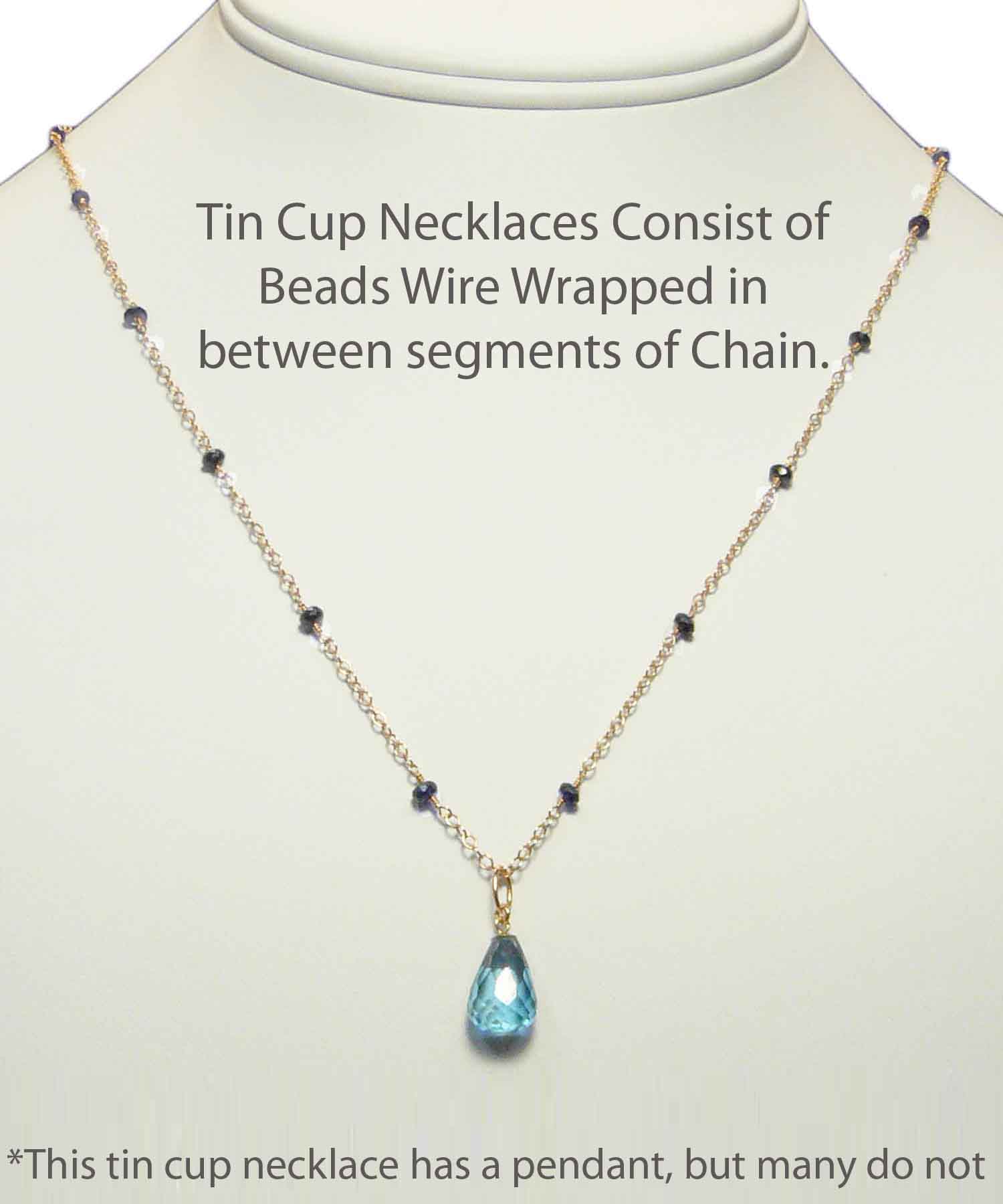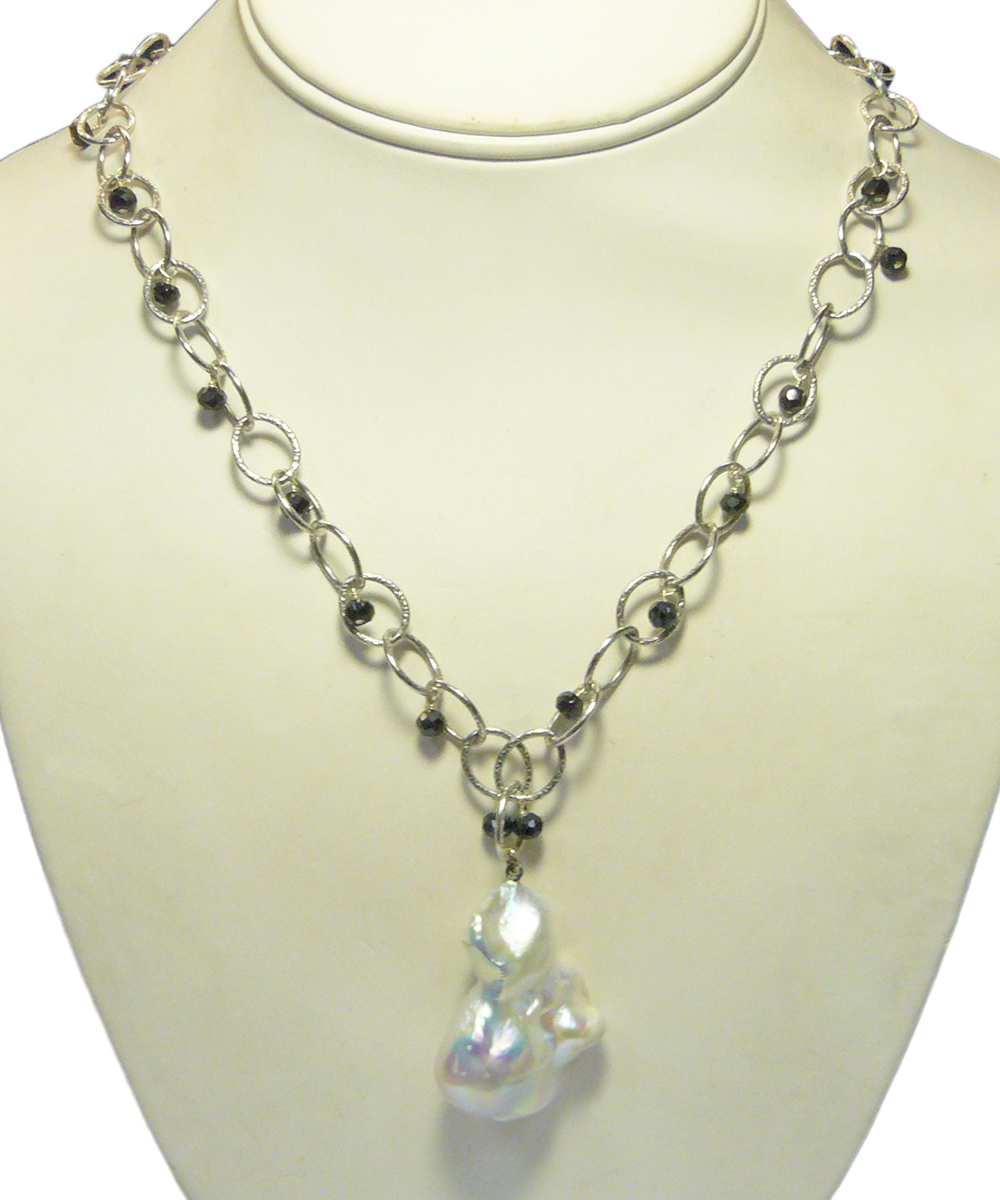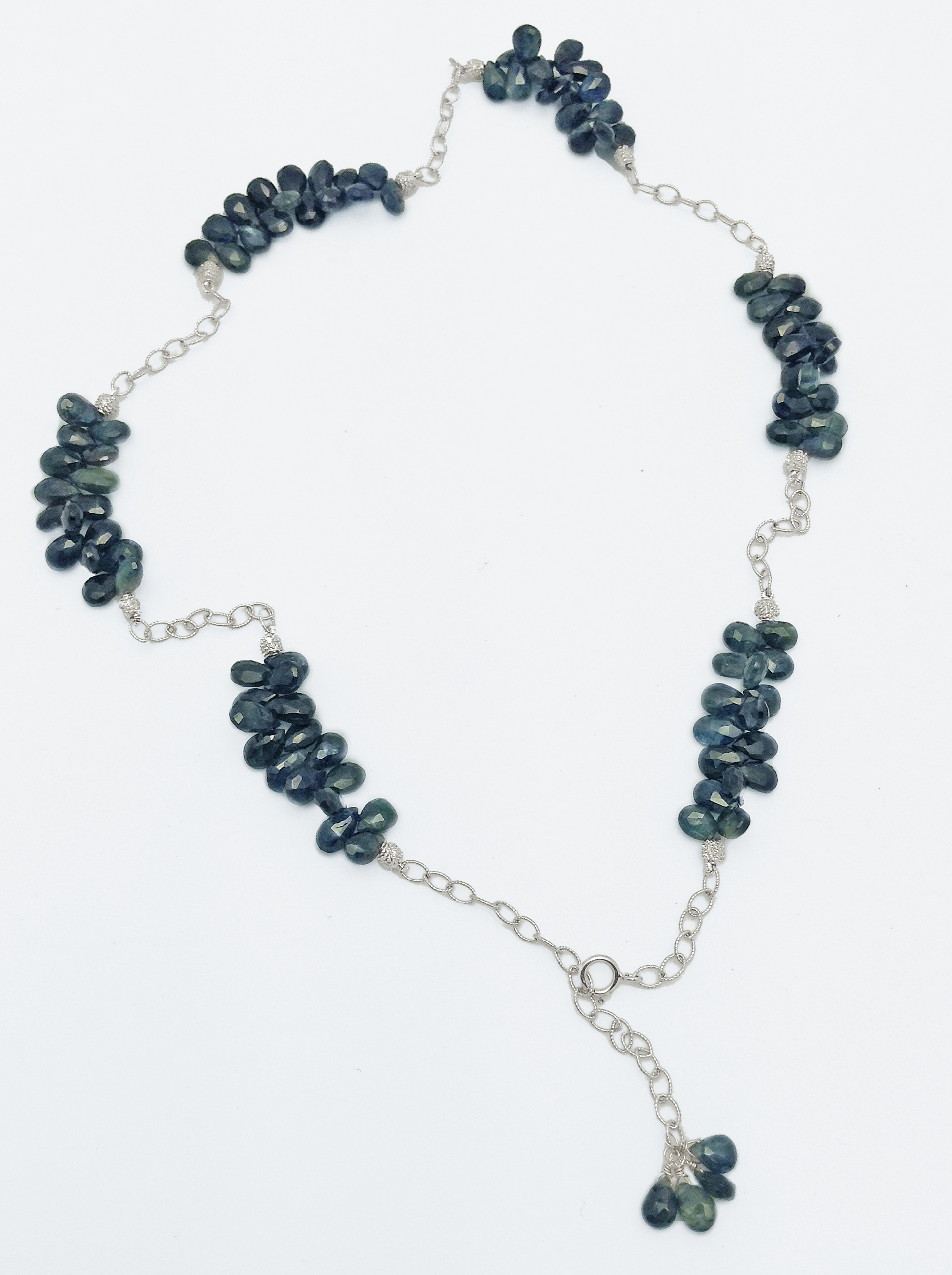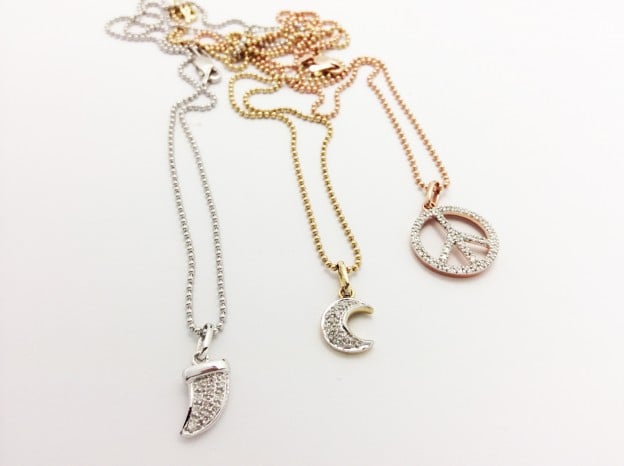We have all seen the simple charm necklace, probably the most tried and true formula in designer jewelry. You start with a pendant, thread it through a basic link or ball chain and voila—finished. This type of chain jewelry is easy to visualize and easy to make, but perhaps even easier to overlook all the other potential uses. In this article, we will go over a few ways to incorporate chains into your designs, but we will start with one of the best techniques at your disposal, wire wrapping.
Chains are defined as a series of objects connecting to each other in continuous order. From a designers perspective, this is great because you won’t need to painstakingly attach, solder, and polish pieces together. You can start with a semi-finished piece and create completely new patterns by adding a few of your own simple modifications.
Chains are unfinished goods which will almost always require some sort of customization. The first things you probably think about when buying chain is the length, width, type of clasp, or findings you want to add, but with a little bit of imagination, you can find so many more directions to take your design.
The Tin Cup Necklace:

There are many variations on the tin cup design and for good reason, it is a simple yet elegant way to put a modern spin on old favorites. Many link chains that you see in stores or online can be cut in regularly spaced intervals and reattached with a simple wire wrapped bead. This small adjustment immediately adds a few new dimensions to your piece. Now you can have contrasting colors, sizes and textures when before you just had a simple repeating chain. You can even go one step further by using more than one size or color of bead in different patterns and layering them on top of each other. The tin cup design is a building block that you can apply to almost any concept regardless of the materials you use. Don’t be afraid to get creative with it!
In our previous entries on wire wrapping, we discussed the basics of selecting appropriate types of wire and how to use them. Feel free to refer back to them if you are not already familiar.
Headpins and Dangling Beads:

Of course there are other ways to branch out with your chain. Instead of wire wrapping in series, you can also use the chain as a foundation to hang beads and other parts. How you fasten the parts depends on what you will be dangling from the chain. If you want to hang a single bead drilled from top to bottom from a chain, you will need to use a headpin. If you want to hang a drop shaped bead that is top drilled, you will use simple round wire.
Mixing chain with Stringing:

Just because we are making jewelry using chain as a foundation doesn’t mean that we can’t incorporate other entirely different techniques. As we mentioned earlier, chains are fundamentally just segments that are joined together in succession. One way to adapt this interpretation to our new design is to alternate sections of chain with other parts–this is really where you can let your creativity take over. You can mix chains with beads strung on thread or more organic looking beads with leather. You can even mix and match chains with each other to give a staggered look that lends itself well for layering.
Now that you have a few ideas on where to start, you can concentrate on the colors and how they mesh together. Do you have a centerpiece or stones you want to use? Maybe you even want to let the chain be the most prominent part of the design. These are all important questions to ask yourself when you are figuring out the direction of your piece. Chain based pieces typically only have a few colors when fully assembled, so it is important to consider which parts you want to emphasize.
To sum things up…
From a designers perspective, chains are great because they are convenient elements that are ideal for creating both creating and reproducing novel designs. We have walked through a few common ways to incorporate chains into your designs, but it is by no means an comprehensive list of what you can potentially do. Jewelry designing is about finding new ways to use parts that you already have, and chains are a great way do just that.
-Cyrus Nemani, Gempacked

